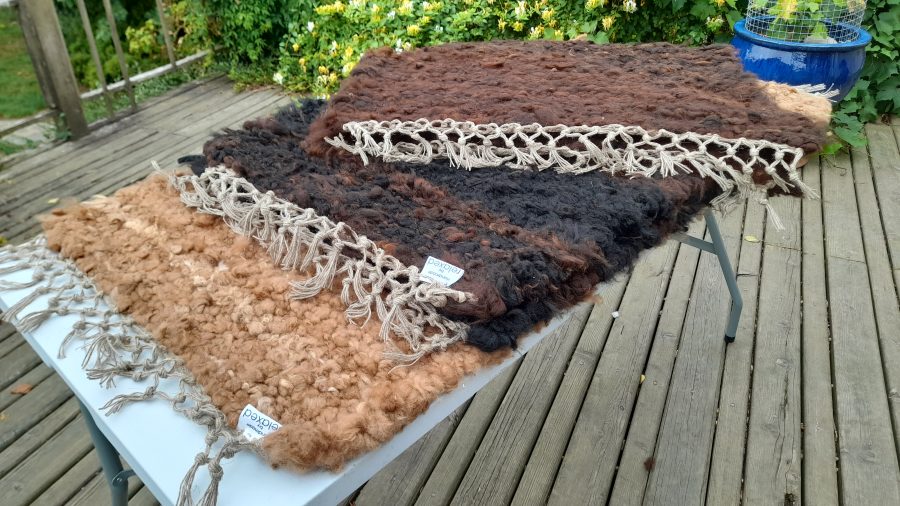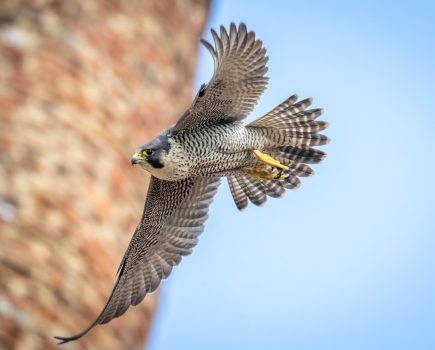In this article extract taken from the August issue of The Country Smallholder magazine, Jack Smellie explores the journey from raw fibre to rustic rug…
In LBS (Life Before Smallholding), we were keen walkers, climbers and mountaineers. Many a day in the hills would see us engaging with the sheep, goats, llamas etc which we met on our travels. In Monglia we sat on the shores of Lake Khuvsgul Nuur (incidentally holding 70% of the country’s fresh water), when we felt the presence of other ‘beings’ from behind. We turned to see the magnificent sight of a herd of yak approaching to enjoy their midday drink. Yak hair can be as soft as cashmere, it needs a fair bit of twist to get it to hold, but David collected enough to make himself a yak bracelet which he proudly wore for years (and which he still has). Closer to home, we’d collect wool from fences and hedgerows and tease and spin it around twigs as we walked in the Peaks, Lakes and mountain ranges of the UK. Many years later, we now find ourselves sitting in front of our Louet Spring and Glimakra Ideal floor looms, planning the next rug designs with another set of amazing fleeces.
To say that both David and I adore weaving is not an exaggeration. Every part of the process is a joy: from counting out the warp threads, to sleighing the reed (love being able to say that…), to gently pushing the shuttle backwards and forwards, seeing the patterns and textures grow and take shape. Before weaving comes spinning, and it’s at this point I should confess that neither of us are ‘technical’ spinners. We may understand the principles of woollen and worsted, long-draw and short-draw, staple length, z-twist and more.. but when we spin, we just spin. Without sounding too ‘ethereal’ about it, we get a feel for the fibre, we start pedalling (or turn on the e-spinner) and off we go. The resulting yarn is uneven, fluffy, thick and ‘rustic’.
DIFFERENCES IN ALPACA AND SHEEP
Sheep and alpaca fibre contain a natural protein called keratin. Proteins are responsible for many physical properties, such as resilience and elasticity. This is what allows sheep wool to stretch without breaking and bounce back into shape. This is known as memory, something alpaca fibre does NOT have and as such, when stretched, alpaca fibre will not bounce back. The surface of both types of fibre are made up of overlapping cuticles. Place a strand of sheep wool or alpaca fibre under a microscope and you will see a scaly surface, which is very different from the smooth surface of synthetic fibres. The scales of the fibre slide apart when stretched, and when the fibre contracts again the scales slide into each other – hence the strength when spun.
Sheep wool cuticles are more hooklike than alpaca fibre, hence sheep wool felts more easily and also needs less twist when spinning. Sheep wool contains lanolin, the waxy substance produced by the sheep’s sebaceous glands to help the fleece shed water and keep the sheep dry. These properties go some way to explaining why wool is easier to spin than alpaca fibre.
When we spin alpaca, short lengths are mixed in amongst long, colours may also be mixed to produce multi-coloured yarn, kept separate or in some cases we may have three or four bags of different colours and simply grab a handful or two of one colour at a time to spin. How we spin is determined by the design – some customers like random, others prefer stripes so they can clearly identify each animal. It is rare to receive alpaca fibre of just one colour so there is always the joy of deciding how to use the individual colours.
The final rug gets ‘vacuumed’ in order to remove anything that should not be there. Even with this, our rugs always come with a health warning: ‘These rugs may shed, so much so that you may think that an alpaca has spent the evening in your house’. They will stop shedding eventually and although never felting quite in the same way as a sheep rug, alpaca fibre can felt and as such, the rugs start to hold together even more securely. It is probably not an exaggeration to say both our alpaca and sheep rugs really should outlive us!
Jack Smellie and David Chidgey run a ten-acre smallholding in sunny North Devon. If you would like to find out more about their rug making and rug commissions, please look them up at www.relaxedathome.org.uk/rugs_fibre.php
This article extract was taken from the August edition of The Country Smallholder. To read the article in full you can buy the issue here.
To receive regular copies of The Country Smallholder magazine featuring more articles like this, subscribe here.
For FREE updates from the world of smallholding, sign up for The Country Smallholder newsletter here.








